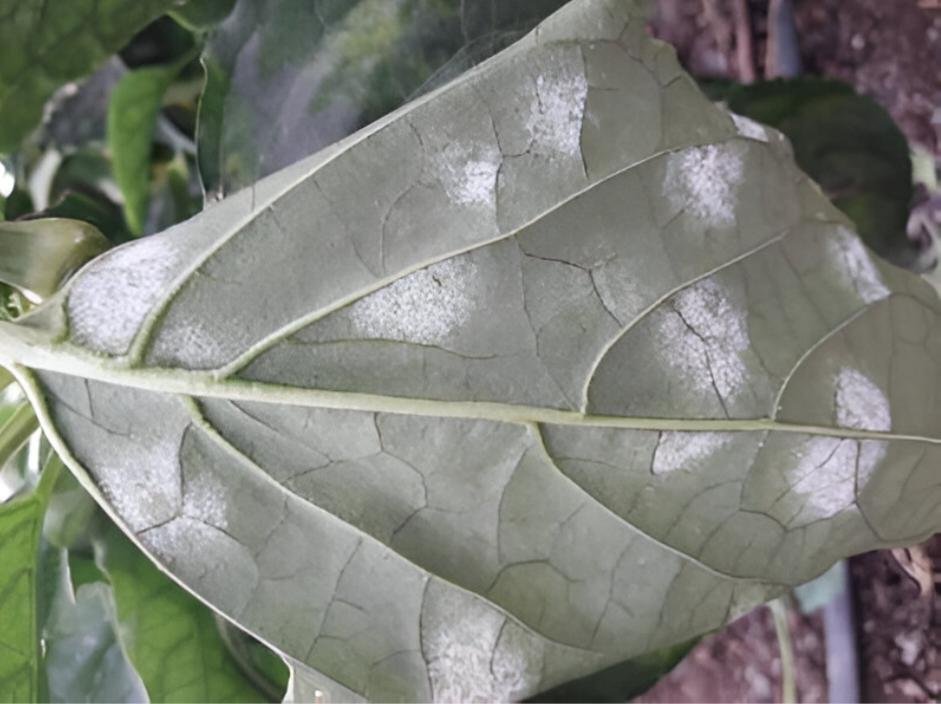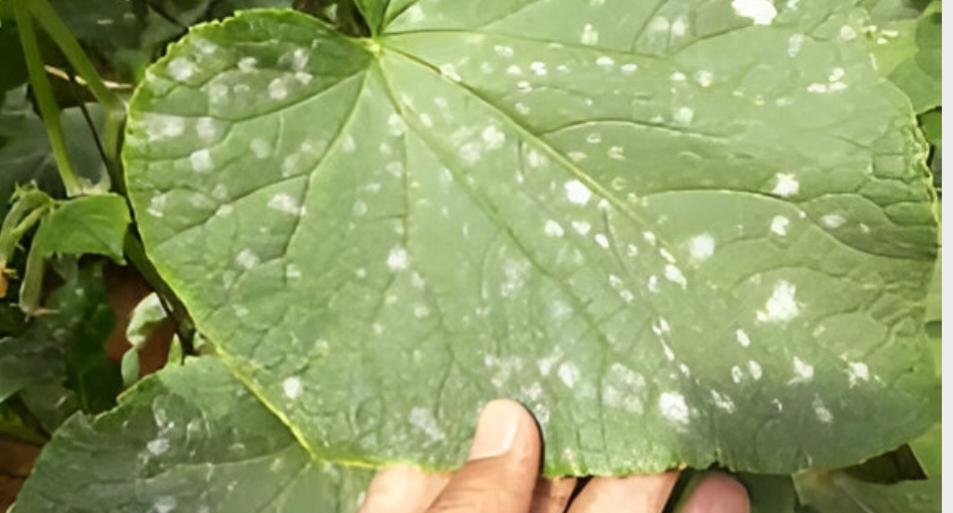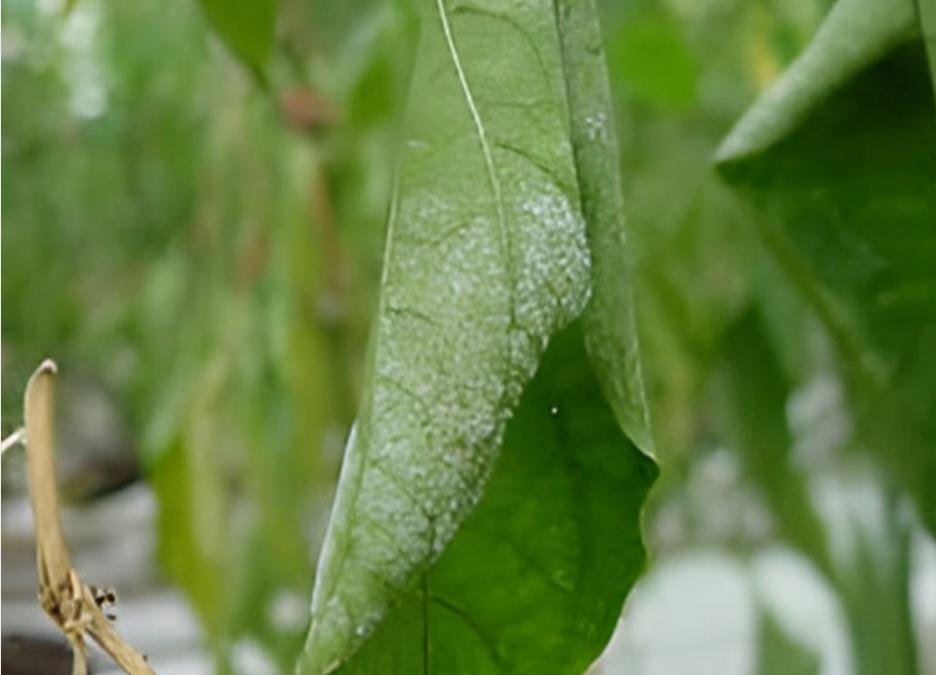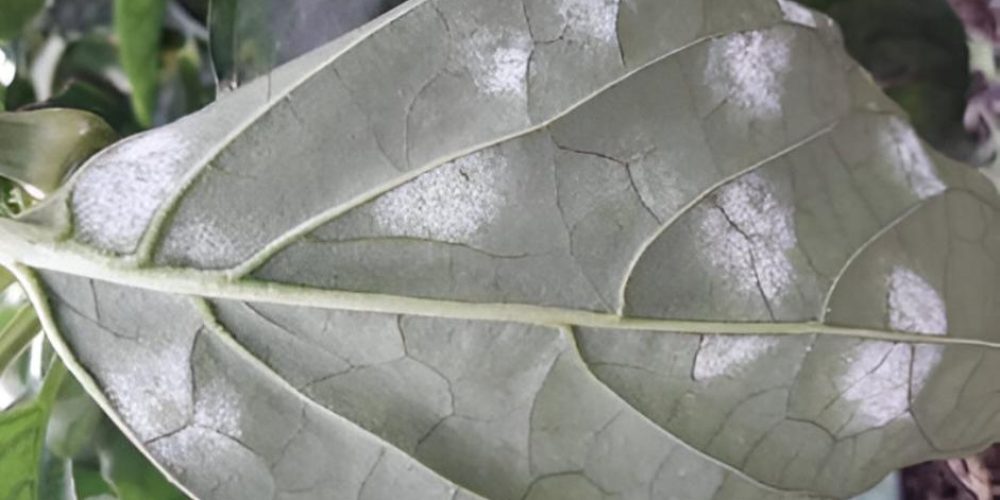Table of contents of the article
TogglePowdery mildew most commonly infects peppers in wet conditions. In this article on your site, WORLD OF PLANTS, we will discuss how to identify this disease and ways to combat it.
Appearance of powdery mildew infection in pepper
The Pesticides Committee explained in the book of approved recommendations for combating agricultural crop pests in 2023 that the appearance of powdery mildew infection in pepper is as follows:
- Yellow spots on the upper surface of the leaf, offset by white fluffy growths on the lower surface. The leaves turn brown and die when the infection becomes severe.


Symptoms of powdery mildew in pepper
The fungus that causes powdery mildew mostly affects leaves while stems and fruit are sometimes affected. Therefore, the first symptoms are white powdery spots on the underside of the leaves and yellow spots of varying intensity on the upper side. Dark spots may also develop on the upper side of the white spots later. As the disease progresses, the affected parts shrink, leaves fall, and plants may die.
The time for the appearance of powdery mildew infection in pepper is if the appropriate environmental conditions are available for the infection to appear.
The spray solution must cover the upper and lower surfaces of the leaves.
Organic control of powdery mildew in pepper
It seems that a solution of water with milk may be useful as a natural fungicide for gardens. This is done by placing this solution on the leaves every two days. Types of powdery mildew vary depending on the host, and this solution may not be effective for all types. If no improvement is noted, try garlic solution or sodium bicarbonate. There are also commercially available biological treatments.
Chemical control of powdery mildew in pepper
Always consider an integrated approach with preventive measures combined with biological treatments if available. Given the number of crops susceptible to powdery mildew, it becomes difficult to recommend any specific chemical treatment. The fungicides based on wettable sulfur, triflumizole, and myclebutanil appear to be able to control fungal growth in some crops.
Cause of powdery mildew in pepper
Bacterial fungi overwinter inside leaf buds and other plant debris.
Wind, water and insects transfer the spores to nearby plants.
Although it is a fungus, powdery mildew can grow in dry conditions.
It can even live at temperatures between 10-12 degrees Celsius, but the optimal conditions for mushroom growth are at 30 degrees Celsius. Unlike sooty mold, small amounts of rainfall and regular morning dew contribute to powdery mildew
Preventive measures for powdery mildew in pepper
Use resistant varieties or those that tolerate the disease.
Plant the crop with sufficient spacing to allow good ventilation.
Also remove affected leaves as soon as the first spots appear.
Do not touch healthy plants after touching infected plants.
Adding a thick layer of mulch prevents the dispersal of germs and their transfer from the soil to the tops of the leaves. Crop rotation can also be effective in some cases.
Fertilize with plant nutrients (balanced fertilization).
Avoid sharp temperature changes.
Till and remove plant residues after harvesting.
In conclusion, we would like to note that we, at the world of plants website, offer you all the necessary services in the world of plants, we provide all farmers and those interested in plants with three main services::-
- Artificial intelligence consulting service to help you identify diseases that affect plants and how to deal with them.
- Blog about plants, plant diseases and care of various crops ... You are currently browsing one of her articles right now.
- An application that provides agricultural consultations to clients, as well as a service for imaging diseases and knowing their treatment for free – Click to download the Android version from Google Play Store، Click to download the IOS version from the Apple App Store.

Sources
Powdery mildew in pepper...4 pesticides approved to combat it - agricultureegypt
Powdery mildew on pepper - plantix




